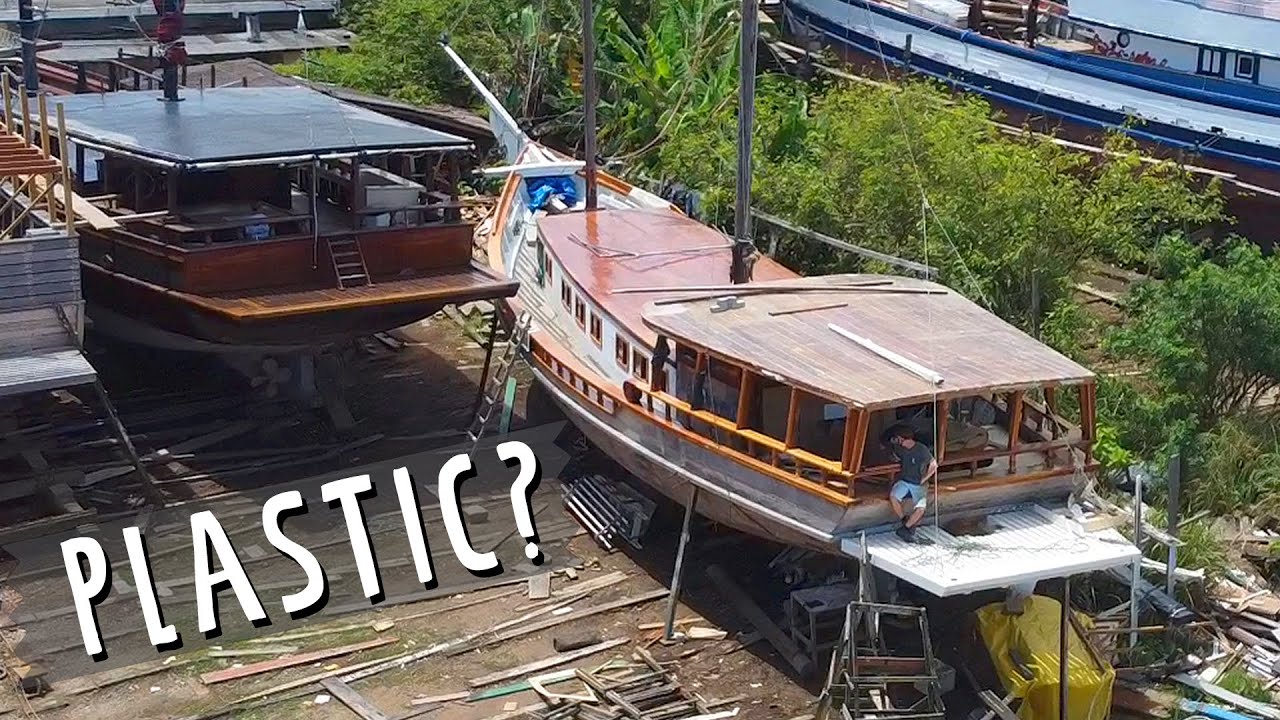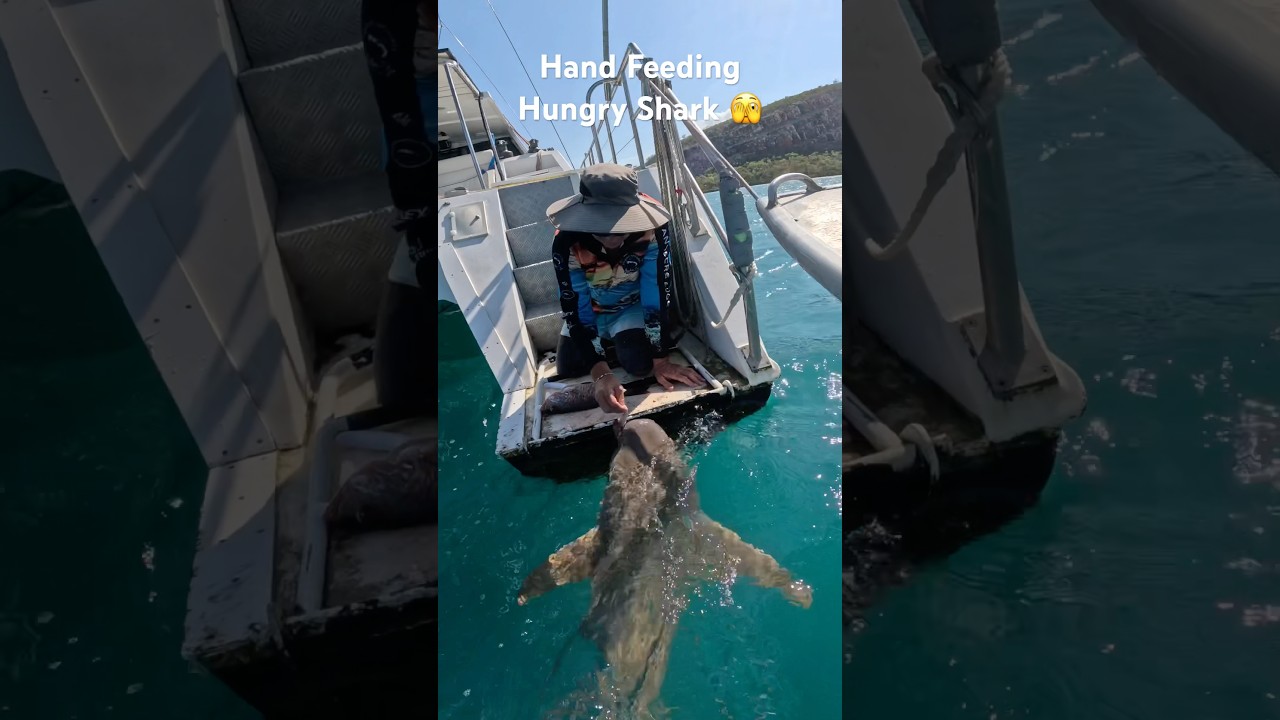Aducerea Yabá de la epavă la vis! Episodul 120 În acest episod al restaurării bărcii noastre, instalăm izolație între pereți, astfel încât să putem avea o acustică mai bună, precum și mai multă intimitate în fiecare cameră. În afară de asta, carena noastră este călăfățată și mobila noastră continuă să prindă contur. Sperăm să vă bucurați de acesta! X 👉 ABONAȚI-VĂ pentru a nu rata noile episoade: https://bit.ly/3dI3hBn PUTEȚI SUSȚINE PROIECTUL: 👉 Devenind patron – alăturați-vă pentru a debloca conținut exclusiv: https://www.patreon.com/sailingyaba 👉 Prin donații Paypal: https://bit.ly/3kR4Ezo sau sailingyaba@gmail.com 👉 Purtând produsele noastre: https://shopsailingyaba.com/ Suntem veșnic recunoscători tuturor celor care ne trăiesc visul alături de noi ♥️ 🇧🇷 Legendas în Português în toate episoadele! 🇪🇸 Subtitluri în spaniolă în toate episoadele! 💙 Cine suntem? Suntem Ben și MP! Recent am decis să achiziționăm o goeletă din lemn cu doi catarge în Brazilia. Detaliul distractiv despre povestea noastră este că barca pe care am cumpărat-o se scufunda și se baza pe multe pompe de santină pentru a supraviețui, așa că a trebuit să o ridicăm pe uscat pentru a începe o reparație completă. Odată ce barca a fost ridicată (pentru prima dată în viața ei) ne-am dat seama că munca necesară a fost mult mai mult decât se aștepta. Între eliberarea sau acceptarea provocării, am decis să alegem a doua variantă. Urmărește-ne când îl readucem la viață pe Yabá cu ajutorul unei echipe uimitoare de constructori navali tradiționali, împărtășind fiecare fază a procesului, depășind culmile și coborâșurile și distrându-se pe parcurs. Mai multe despre noi: 👉 Despre noi + Întrebări și răspunsuri https://youtu.be/TldDlohjwTs 👉 site-ul nostru cu mai multe informații despre proiect http://www.sailingyaba.com 💙 Mulțumiri masive echipei noastre uimitoare de dulgheri care nu ne-au dezamăgit niciodată și continuă să ne uimească la fiecare pas al procesului: Toninho, Zeca, Hélio, Claiton, William, Nezo, Nico, Adilson, Beto și Luiz. SUNTEȚI LEGENDE!
source
Construirea unei barca cu pânze din LEMN cu PLASTIC? — Sailing Yabá #120

38 thoughts on “Construirea unei barca cu pânze din LEMN cu PLASTIC? — Sailing Yabá #120”
Comments are closed.




The insulation won’t burn, but I wonder if there’s anything else that’s flammable on the WOODEN boat? 🤔🤔
I hope you are going to take us with you on your journeys when she is finished.😊
I saw another boat use some kind of hot tar over the caulking of the boat but it was on the deck so I don't know if you can do that on the sides.
Don't forget to put the prop shaft in before you get launched !!!
Hi Ben Hi MP My life of late has been insane and you two have been my one pleasure . As to the color you paint your new home i will give no opinion but the one request i will ask is that when you paint the hull would you consider painting the boot strip Gold .It goes with any color and would make the statement that you have restored Yab"a to the gold standard She so richly deserves .
At 13:45; I'm glad you're making use of the useless space. 😉
I don't remember the old layout. Could you do a side by side comparison?
Thanks!
If you install these on outside walls, you absolutly need a vapor barrier or you will get condensation and eventually mold and rotten wood! Vapor barriers should always be installed on the "warm side" of any insulation (inside). There is no other way getting around this.For inside walls… no problemo.
.
A small recommendation: if there's going to be any electricity in those wires, having them sandwiched between insulation and a solid piece of wood, or just peaking out though a hole barely big enough for them to pass through that hasn't been eased to avoid chafing could come back to haunt you. It might be a good idea to invest in conduit for all the wiring so if you ever have to replace any or add another that you don't have to pull everything off the bulkheads and also it might be good to make sure that there is strain relief, that no strain is placed on the wires as they snake their way from each of their ends to another, and that years of vibration they'll be subjected to while they're buried there don't slowly gnaw the insulation off where they go around any non-eased piece of wood, eventually causing the possibility of a broken wire or a short circuit. Even if they're low-voltage DC, and even then if they're not just low-voltage DC but they're only carrying power to very low wattage devices like little LEDs or something, and even if in addition they are protected by very small current capacity, and fast-blowing fuses, if you do it the right way NOW, you won't have to chase down the spot where the broken conductor or short is, rip panels off looking for it, etc., and the risk of fire will be lowered if they're NOT just low voltage or data; (I'm talking about, for example, what is shown in this video at about 6:56,) even if those are just data cables… can you imagine having to pull that all apart in a few months or a year to find and replace one? Just saying. I saw what looked like two very good opportunities for those wires to be damaged or to suffer damage in the future where they ran into that little channel and then again where they make that sharp turn around the notch in the wood cut with a chisel, and pop out along the overhead. Best of luck either way.
Do you expect to launch in 2023?
SO WHAT IS THE r RATING ?
Are you guys gonna go back and take all those wall pieces off and glue them down . if not there be a lots of squeaking.👍👍 It's really coming together now you can get out and enjoy the sun and enjoy the Caribbean🍻
Moving along great, I hope you also saw the comments about the wiring with the crimp connectors you used, they are a major hazard! Sending good wishes your way – can't wait to see more.
Is there an open area like salon for you guys and guests to sit in.
One day closer to the water and a new chapter in your lives
You’re wasting all the space between the frames.
It has been previously mentioned but what are you guys planning on doing about the issue of biting insect bugs getting inside? Without insect screens on those windows and aft cabin door the insect problem is going to drive you and your guests totally insane. Installing inboard window screens is and obvious solution but perhaps not esthetically pleasing. It did occur to me insect spray might be a partial solution but not an environmentally sound choice. However it's worth remembering many people have bad allergic reactions to insect bits and insect sprays.
I'm beginning to suspect some people's well intended comments, although certainly welcome, are unfortunately short on good boatbuilding experience. Seeking good boatbuilding advice is absolutely critical regardless of who or where it comes from. So best to inform yourselves before making more mistakes. Be critical of what people suggest and ask plenty of questions.
Is the insulation ecopanel .It looks like the product 1 of my clients manufactures here in Australia .They distribute it around the globe
I can’t wait to follow your journey.. I love your boat I love the phinisi styles. Wooden schooners feel so romantic
Nice idea this PET stuff, looking into it for my Iload Campavan. Made in Britain. Rippa layout! Looking forward to the splash. Thanks m8s, you and your crew keep up the good work!
An electric turkey carving knife cuts that insulation straight and effortlessly.
What happened to the 'Woodpecker' ?
Insulation behind the slats?
Dear Sailing Yabba. Eric the Expert here. It has come to my attention that you are not listening to the many expert opinions on every subject from paint colour to the consequences of methane build up under the duvet. I must warn you that not listening to YT's experts will result in your mast falling off and all the doors blowing off like a Clown car. Toot Toot !
Looking forward to splash day.!!!!!
Looking good & nice seeing it come together.
in Canada we predominately use Robertson (square) screws & bits. Far better in my opinion when compared to flat or Phillips screws.
I can not wait to see what color you choose!!!!
When you're finished, I hope you hang Ben's jorts off of the mast and turn them into a pirate flag. Lol. Doggy is so cute.
Thick woolen tapestries on the walls also work really well to deaden sound. Consider hanging some tapestries if things are still noisy once you've finished all the rest.
OMG!!! So much coming together. You've put in a lot of work and it shows so beatuiful. Love you guys!!!
Hi Ben and MP. You keep avoiding my question! I grew up on the ocean in New England and have had several wooden boats. Back in the 60's and 70's a lot of boat owners got the bright idea to fiberglass wooden boats only to find out that in a couple of years the wood dry rotted and had to be replaced. You are using a lot of fiberglass and epoxy on the Yaba. Are you worried about having a problem with dry rot because the wood cannot breath?
Those bed brackets are a single point of failure. Under sea, sectioned off covers to smaller vented lockers will be more managable.
I rebuilt an RV and replaced the bedbase and created smaller lockers due to brackets like yours failing and destroying the frame.
looking good !!
Hey Ben and MP!
That caulking compound looks like a biscuit dough I make!
So much happening in this episode!!! You both are certainly making fantastic headway!
Great drumming too Ben!!! I'm surprised MP slept through it!!!! 😁
Wonderful to see the enthusiasm still well and truly alive. Till the next exciting episode.
How does the plastic hold up with condensation? Does it absorb the moisture or does the moisture run past it down the wall to the bilge area? Since it's plastic, does water just run off it or does it absorb it? I like the P.E.T. idea of recycled material and fire resistance.
Another thought! The wardrobe has a space for shelves……so it would be a great hidyhole area for hiding a female from pirates should they ever board your vessel. Secret hiding area so to say.
I'm fairly sure that caulking should be done on the hull, with a material that don't harden fully and keeps some flexibility. It was why they used to soak the cotton in tar back in the olden times and used a putty of melted pine pitch. Sticky as all hell and it won't fully harden so it flexes with the board of the hull. I always liked the ingenuity of that solutions and always wondered how they figured it out. I'm fairly sure there's a modern better material out there with those same properties, but I can't be sure.
Funnily enough they used a melted blend of the same thing almost just like we now use epoxy to keep water off the hull. Clever right 😀 But what would the perfect modern material be? It would dry hard, but not fully stiff and retain flexibility, hm?